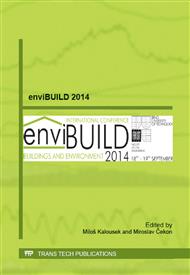p.117
p.121
p.125
p.129
p.135
p.139
p.146
p.150
p.154
Identification of a Percentage of Engagement of the Bivalent Source of the Earth–Water Type Heat Pump in Heating of the School Using the DDFPM Method
Abstract:
The calculation based on the DDFPM method will enable us to identify the percentage engagement of the bivalent source in heating of the facilities in the period under consideration and at the location under consideration and we will be able to verify an optimum design for covering the heat loss by the bivalent source of the heat pump.
Info:
Periodical:
Pages:
135-138
Citation:
Online since:
October 2014
Authors:
Price:
Сopyright:
© 2014 Trans Tech Publications Ltd. All Rights Reserved
Share:
Citation:


